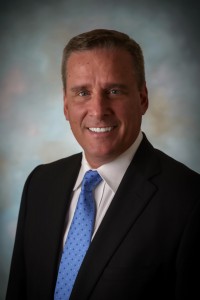Consistency and Communication Key for Employers Post-pandemic
- -
By Vanessa Orr

Tom Murphy
A lot has changed post-pandemic, and this includes employer liability issues as the work dynamic has shifted from employees being in the office to working remotely. In every industry, including healthcare, turnover is up and people are choosing not to return to the physical workplace.
“In medical practices especially, whether at large hospitals or in solo doctor’s practices, many employees aren’t comfortable coming back,” said Tom Murphy, senior vice president/National Health Care Practice Danna-Gracey | Risk Strategies Company. “Unfortunately, not everyone can work remotely. While the clerical staff may be able to work from home, the medical staff provides care hands-on.”
This preference for remote working has created a shift in the power dynamic, which is making it difficult for employers to hire and retain employees.
“For years, employers would tell potential employees what was expected, but now the younger generation goes into interviews pretty much demanding what they want of the workplace,” said Murphy. “Employees now control the power and have the choices.”
As a result of the Great Resignation, many people left jobs and are now looking to do something new. And while they are going back into the workforce, which is keeping unemployment fairly low, employers are finding that they need to be a lot more flexible to entice these prospective employees. Larger employers especially, like hospitals and large medical practices, are working to accommodate workers by offering a hybrid model where employees have more flexibility to do things during the day (like taking time off for doctors’ appointment or childcare).
“While some national employers are requiring people to come back to the office, they still need to make exceptions for people with physical and mental disabilities, including some issues that have occurred with people who have long COVID,” said Murphy, adding that issues with this population are on the increase.
While a number of industries can telecommute, medical providers that needs hands-on help are finding that even while they can require people to return to the office, they still need to be more accommodating, whether that means paying more to employees with a higher risk of exposure or providing more flexible scheduling.
“When you’re talking about employer liability, having a more remote workforce also makes employee training and timekeeping more challenging,” said Murphy. “While companies may have provided in-person training or new employee onboarding multiple times a year in the past, a lot of this is now done on Zoom or conference calls, so it’s extremely important to provide a consistent message across the workforce, using the same information and documentation.”
He adds that over the past five years, practices have also seen an increase in federal regulations, which means that Human Resource departments have to be far more diligent with remote employees to ensure that not only are employees working when they are supposed to be, but also that they are being compensated if they are using personal equipment for their jobs like cellphones and home Wi-Fi.
While sexual harassment complaints have decreased with remote working, it can still be an issue with Zoom calls and direct messaging when employees say or do things that are inappropriate. Employers are also seeing an increase in employees speaking up about social issues and free speech, wearing clothes or symbols in support of organizations that they support.
“This can be an issue for offices that have dress codes or that try to stay apolitical,” said Murphy. “You can tell employees that they can’t wear these things in the office, but that’s harder to tell them not to wear them at home. It’s a fine line, and companies need to work with their HR departments to deliver a consistent message.”
While there are trade-offs—for example, remote employees have fewer workers’ compensation claims—businesses need to place a priority on consistency and communication to make sure that all employees, whether in the office or not, are clear on company policy.
“This new workforce dynamic, including telecommuting and telemedicine, are here to stay,” said Murphy. “Consistency and communication are key to making it work.”
For more information, call Tom Murphy at 800-966-2120 or visit www.dannagracey.com.
